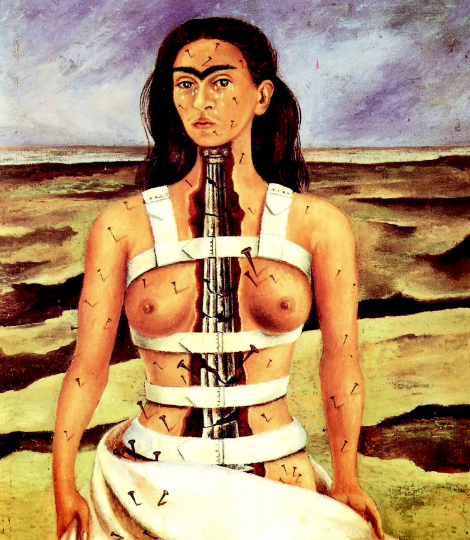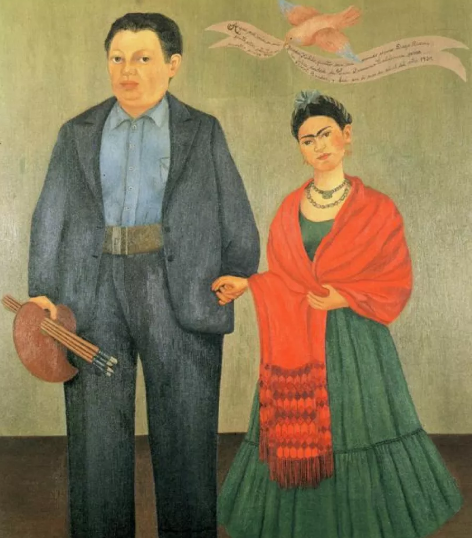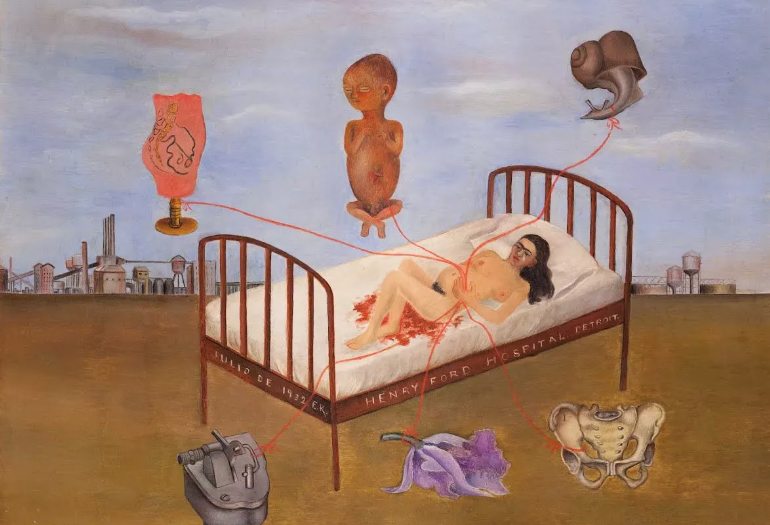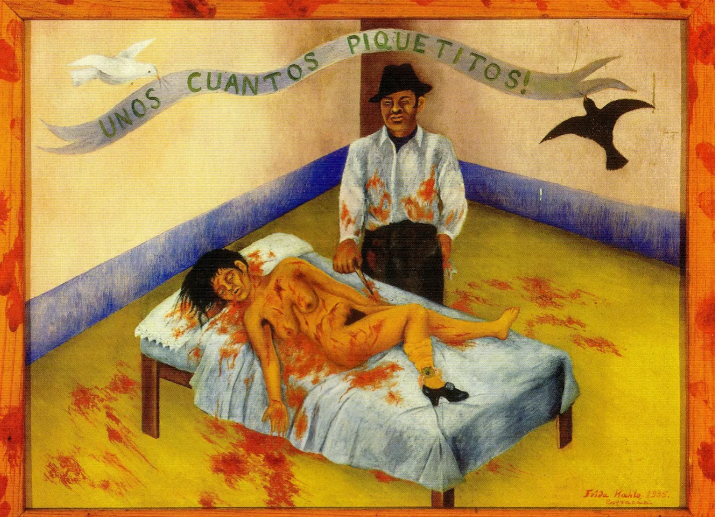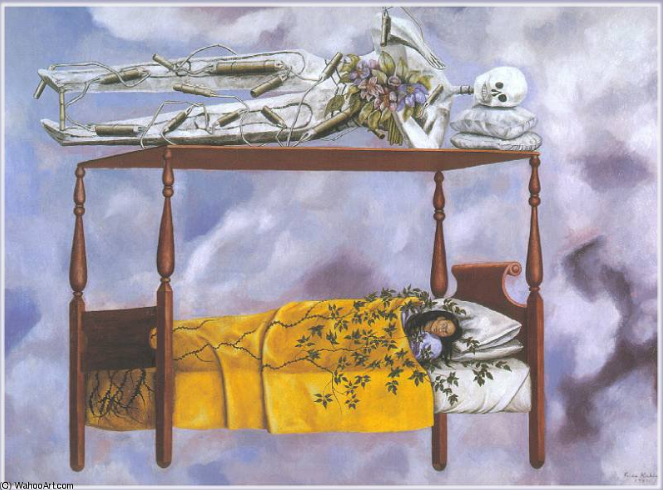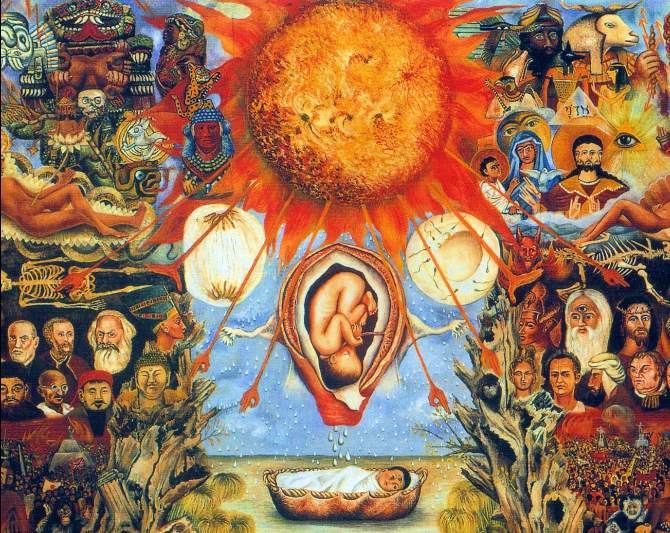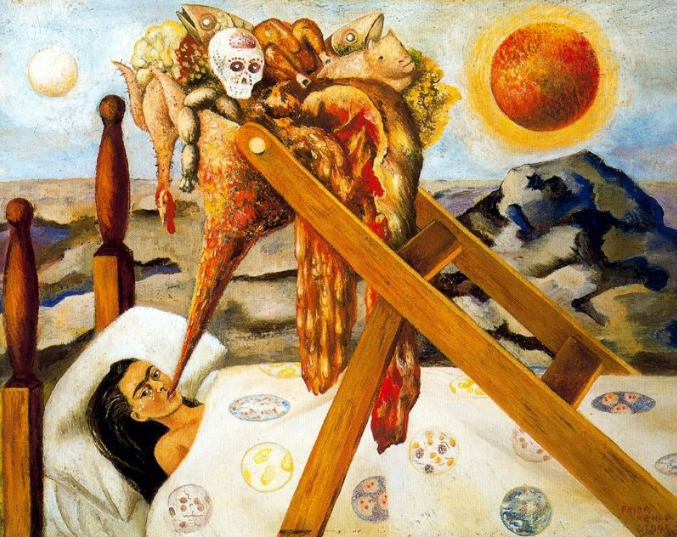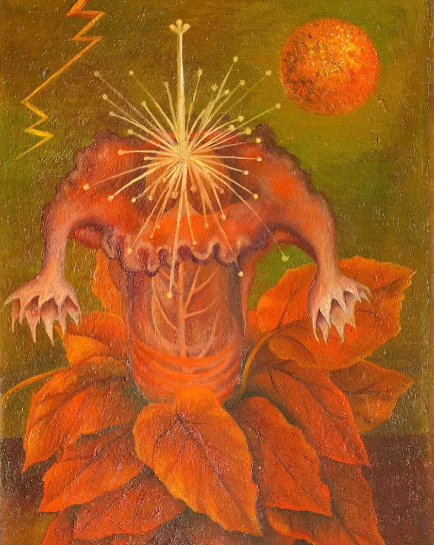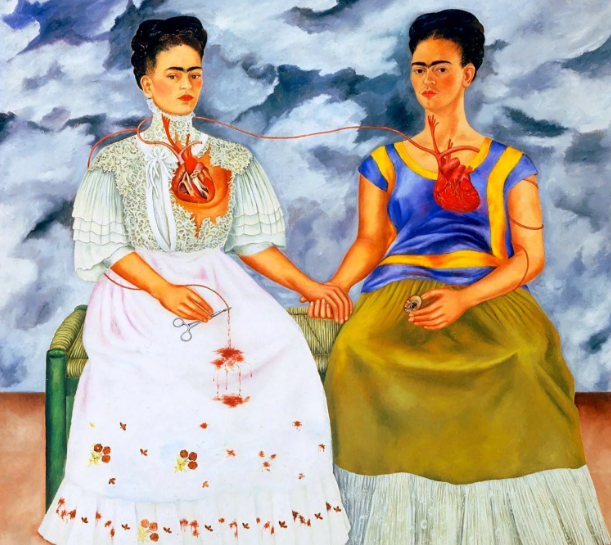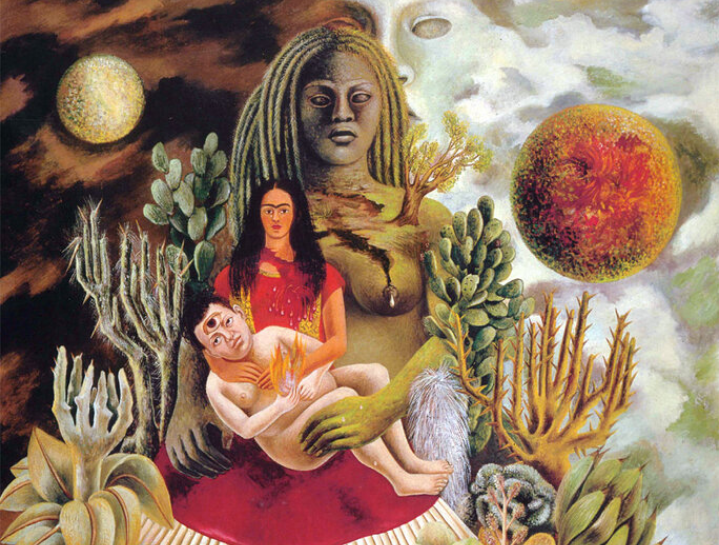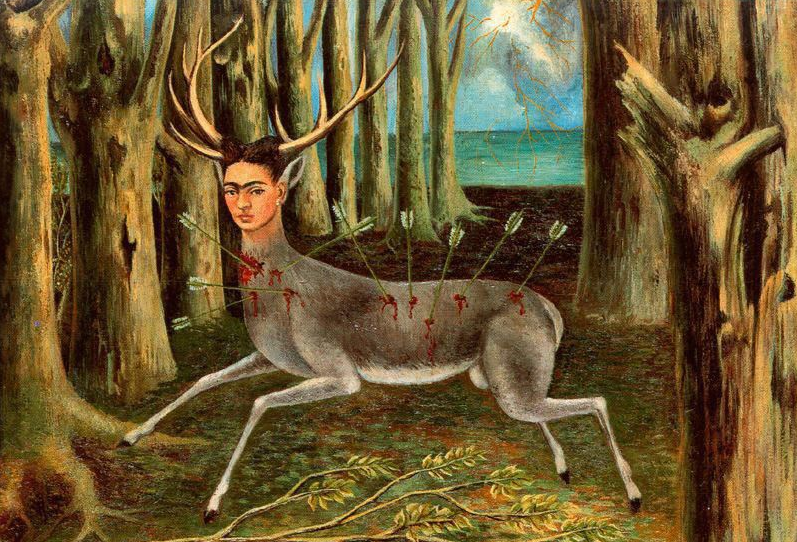Top 10 Paintings from Frida Kahlo: A Fearless Artist World
In this post, you can dive into a world full of art as we explore Frida's top 10 paintings.
We are about to tell you some background history, where to see them and why each of them we consider are her best artworks!
Get ready to discover the curious, interesting and Frida Kahlo paintings.
You might already know that Frida Kahlo is one of the most famous painters in the world…But which are her best works? Or why has it caused such a furor to be able to see his art in the famous Blue House (Casa Azul)?
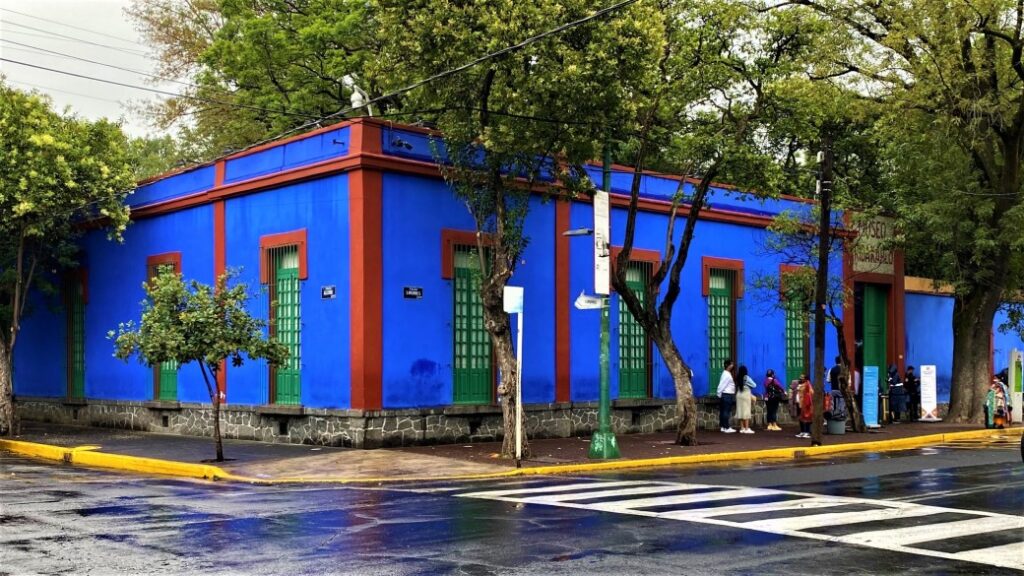
Well, you’re in for a treat because we have compiled our top 10 list of Frida Kahlo paintings.
You will agree with a few.
Not with some others.
But we are sure that you would agree with us that these ones are at least some of her best!
This is our personal opinion, please do not judge us. 😜
Let’s dive right in.
- La Columna Rota (10) 🎨
- Diego y Yo (9) 🖼️
- Hospital Henry Ford (8) 🖌️
- Unos Cuantos Piquetitos (7) 👩🎨
- El Sueño (6) 🎭
- Moisés (5) 🎨
- Sin Esperanza (4) 🖼️
- Flor de Vida (3) 🖌️
- Las Dos Fridas (2) 👩🎨
- El abrazo de amor de El universo, la tierra (México), Yo, Diego y el señor Xólotl (1) 🎭
- Honorific Mentions: El Venado Herido and Difuntito Dimas Rosas 🎨
- Conclusion 🖼️
La Columna Rota (The Broken Column)
Frida Kahlo paintings are such a way to understand most of the vision of love and life that Frida had. For instance, this one is a striking artwork that encapsulates the artist’s resilience in the face of pain and suffering. In this powerful self-portrait, Kahlo presents herself with a shattered body, revealing her physical and emotional anguish.
Description:
In this painting, Frida stands tall, her body pierced by a column that symbolizes her suffering and pain. The tears on her face and the steel corset accentuate her vulnerability. Yet, she gazes directly at the viewer, making it clear that her suffering will not break her.
Why do we like it?:
As most of you know, Frida suffered an accident in which she was paralyzed with a completely broken spine. That is why we consider this one of her saddest paintings, which conveys every part of this woman’s life. Pain, fear, and suffering. Although some say suffering is the primary basis for becoming a great artist or a legend…
- Where to see it?: 👀 To experience this masterpiece, you can find it at the Dolores Olmedo Museum in Mexico City.
- Related tour: 🎨 Step into Frida Kahlo’s Art House (3.5 h)
Diego y Yo (Diego and I)
In “Diego and I,” Frida Kahlo presents a delightful and intimate snapshot of her tumultuous relationship with the famous Mexican muralist Diego Rivera. In this captivating piece, she intertwines their two worlds. Both are symbolized by their hearts, connected by a vein-like ribbon, signifying love and tension.
Description:
This painting showcases Kahlo’s whimsical yet profound way of exploring her complex emotions. Her bond with Diego was a source of both joy and sorrow. Therefore, this artwork captures the essence of their passionate, stormy connection.
Why do we like it?:
Most Frida Kahlo paintings are perfect for analyzing and getting to know the relationship between Frida and Diego. We always get emotional when we understand that she was hurt and that she always felt Diego in her mind because of everything he did to her and what he put her through.
It was never a love story but of psychological abuse and pain. Frida, however, always looked at it with eyes of forgiveness and compassion.
- Where to see it?: 👀 The playful yet poignant “Diego and I” can be seen at the Dolores Olmedo Museum in Mexico City.
- Related tour: 🖼️ Xochimilco & Coyoacan in Mexico City (8 h)
Hospital Henry Ford (Henry Ford Hospital)
In “Hospital Henry Ford,” Frida Kahlo takes us on a poignant journey through her experiences. This painting reflects her time spent at Henry Ford Hospital in Detroit after a miscarriage. The imagery is vivid, blending elements of Kahlo’s physical and emotional pain, such as a snail symbolizing slowness and a baby girl.
Description:
The painting is a striking portrayal of vulnerability, pain, and resilience. It embodies Frida’s indomitable spirit even in the face of adversity. Her art tells a story of strength through suffering. Indeed, Frida Kahlo paintings are some works with a heartbreaking story behind them, but that helps us better understand his life and his vision as an artist.
Why do we like it?:
Also, in this painting, we can notice how Frida visualized her life through pain. We chose this painting because it is one of the best works in which she summarizes her life. For example, her pain for not being able to have her son, her terrible immobility, and her broken spine. As shown in the picture, life is full of grotesque images, fears, and intrigues.
- Where to see it?: 👀 To witness this inspiring masterpiece, visit the Dolores Olmedo Museum in Mexico City.
- Related tour: 🎭 Museum of Frida & Diego’s Studio / Private / 7h)
Unos Cuantos Piquetitos (A Few Small Nips)
In “Unos Cuantos Piquetitos,” Frida Kahlo’s artistic prowess shines brightly. This painting carries a powerful message against domestic violence. It depicts a poignant scene where Kahlo’s personal pain and societal commentary converge.
Description:
Frida encourages us to speak out against violence and injustice through her art. This painting is an inspiring reminder of the strength and resilience she embodied in her life.
Why do we like it?:
Frida was inspired by a story she read in the newspapers in which a man had murdered his wife with 20 stab wounds. However, when he was with the police, he said that he had only given his wife “a few nips.”
Around the 1940s, femicides were simply seen as a problem where the woman was unfaithful, and the man became jealous and killed her. These cases were not given more importance and were left as “couple’s stuff.” In a sexist country full of violence, Frida shows the harsh reality of many women and the impunity of the authorities in everyday life. Frida Kahlo paintings
- Where to see it?: 👀 Witness the profound impact of this artwork at the Museo Frida Kahlo, located in Coyoacán, Mexico City.
El sueño (The Rêve)
“El Sueño,” a captivating artwork by Frida Kahlo, delves into the realm of dreams and desire. Kahlo navigates the surreal and the subconscious in this painting, often seen as a window into her innermost thoughts and emotions.
Description:
You’ll find a dreamlike narrative filled with symbolism as you gaze upon this piece. The painting reflects Kahlo’s desire for motherhood and deep connection to the natural world. The serene and enchanting atmosphere evokes the magic of possibility and the importance of nurturing one’s dreams.
Why do we like it?:
In this artwork, Frida’s surrealism is pretty nice. She shows her concept of dreams, death, and their interplay. In the painting, Frida is depicted sleeping in a bed reminiscent of a canopy bed, with ivy climbing up her body like a superficially uncertain thread of life.
Furthermore, an awakened skeleton trapped in an explosive trap rests above, perpetually symbolizing the inescapable reality of death. Frida Kahlo paintings portray the incredible imagination of a pioneer in showing sentimentalism in Mexico at its best.
- Where to see it?: 👀 To experience the enchantment of “El Sueño” in person, visit the Museo Dolores Olmedo in Xochimilco, Mexico City.
Moisés (Moses)
“Moisés,” a captivating creation by the iconic Frida Kahlo, unveils a profound exploration of life and rebirth. Kahlo employs her signature blend of surrealism and personal symbolism in this artwork to convey her connection to nature and the human experience.
Description:
The painting “Moisés” exudes a spirit of transformation, symbolized by the monumental hands and the emergence of a serene infant. It represents Kahlo’s enduring fascination with the mysteries of birth, life, and the renewal cycle.
Why do we like it?:
We love this work for representing fertilization, showing the beginning of life, and all the nuances that give it meaning. Politics, religion, history, and the arts are all part of our cosmovision of life and how we forge our beliefs and values. They are all part of our life, mind, and soul.
That is, we are connected to nature by our animal essence and to the outside world by our ancestors’ history, successes, and mistakes. This surrealist painting is colorful and full of Frida’s messages, which make us understand that her way of seeing life was unique, memorable, and full of nuances.
- Where to see it?: 👀 To see it, visit the Blue House (Casa Azul) in Coyoacán, Mexico City. Here, you’ll discover not just the art but the very essence of this extraordinary artist.
Sin Esperanza (Without Hope)
It is a masterful creation by the remarkable Frida Kahlo, who dives into the depths of despair and vulnerability. In this artwork, Kahlo’s talent for vividly expressing complex emotions shines.
Description:
“Sin Esperanza,” which translates to “Without Hope,” explores emotional turmoil. Kahlo, known for her introspective works, poignantly conveys her inner struggles in this painting. The stark representation of a wounded heart, isolation, and the bleak landscape reflect a profound sense of hopelessness and desolation.
Why do we like it?:
We like this great painting very much because it shows the putrefaction of food as a vision of the final part of life. In fact, you can see a sugar skull up to the top of the food, which is very significant on the Day of the Dead.
At one point in her life, Frida did not eat, which led her to lose a great deal of weight. She was funnel-fed as she refused to eat. This painting gives us a great impression of what was deep inside the artist’s thoughts and soul.
- Where to see it?: 👀 To admire it, you can visit the Museo Frida Kahlo in the neighborhood of Coyoacán, Mexico City. Here, you can witness the raw emotional intensity of Kahlo’s art and the enduring impact of her work.
- Related tour:👨🎨3 Days in Mexico City: Know the City with Your Guide (3D)
Flor de Vida (Flame Flower)
“Flor de Vida,” a captivating creation by the iconic Frida Kahlo, is a vivid expression of life’s resilience and the celebration of love.
Description:
In “Flor de Vida,” Kahlo brings to life the concept of a vibrant life flower (its translation), where the heart takes the form of a flourishing, beating organ surrounded by arteries that branch out like tree roots. This painting symbolizes the everlasting strength of love and the interconnectedness of all life. It’s a playful yet profound representation of the life force that flows through us.
Why do we like it?:
Frida Kahlo had a deep interest in medicine but couldn’t pursue it due to a life-altering accident. Yet, her fascination with anatomy persisted. In her Blue House, she displays her extensive collection of medical books, many of which are about reproduction. These books inspired her artwork. Kahlo’s Mexican roots influenced her work greatly, with leaves as a recurring motif.
In “Flor de la Vida,” she transforms leaf veins into human arteries, uniting botany and anatomy to express the essence of life. The inner explanation of this painting made us think that it is one of the most powerful Frida Kahlo paintings. She showed us many of her deeper desires in a “natural” way. As we mentioned before, nature is an essential part of us as humans. It helps us understand the meaning and mission of our lives here on Earth.
- Where to see it?: 👀 To witness the magic of “Flor de Vida,” visit the world-famous Museo Frida Kahlo, also known as the Blue House (Casa Azul) in Mexico City.
- Related tour: 🖼️ Explore the Coyoacan District Online
Las Dos Fridas (The Two Fridas)
“The Two Fridas” is a mesmerizing masterpiece by the renowned artist Frida Kahlo, symbolizing the duality within her own identity and her tumultuous emotional journey.
Description:
This striking painting features two nearly identical Frida Kahlos sitting against a stormy sky. One Frida, dressed in traditional Tehuana attire, holds a portrait of Diego Rivera, while the other, wearing a European Victorian-style gown, clutches an anatomical heart. This piece portrays the conflict between her Mexican and European heritage, her love for Diego Rivera, and her internal pain.
Why do we like it?:
Possibly the most excellent classic or one of the most famous Frida Kahlo paintings. We like it very much because of the simple fact that it shows Frida’s duality. Her European side (left) and indigenous Mexican side (right). Besides, this painting was a catharsis to overcome her separation from Diego Rivera. An image that has catapulted Frida as one of the most famous artists of the 20th century and of all art history.
- Where to see it?: 👀 To encounter “The Two Fridas,” you can explore the stunning Dolores Olmedo Museum in Mexico City, home to an extensive collection of Kahlo’s works.
The Love Embrace of the Universe, the Earth (Mexico), Myself, Diego, and Señor Xolotl
“El abrazo de amor de El Universo, la Tierra (México), Yo, Diego y el señor Xólotl” is a visually striking painting by the iconic Frida Kahlo, reflecting her deep connection to Mexican culture and her profound love for Diego Rivera.
Description:
This impressive artwork depicts Frida as a central figure, her outstretched arms embracing the universe. The earth’s surface emerges beneath her, with roots binding her to the Mexican soil. Diego Rivera, her husband, is portrayed as an infant in her embrace. The god Xólotl, a symbol of death and transformation, appears at the top, looking over this cosmic union.
Why do we like it?:
As you may have seen, Frida Kahlos paintings are full of symbolism. This one is no exception. We like this image because it alludes to the mythology of ancient Mexico, specifically to the goddess Cihuacoatl.
The greenness of nature and her gaze toward holding Diego forever in her arms leave us with an image of Frida’s vulnerability and how, through her great imagination, she could show us her world and her experiences in life.
- Where to see it? 👀 This painting’s enchantment can be experienced at the Palacio de Bellas Artes in Mexico City.
Honorific Mention (1): El Venado Herido (The Wounded Deer)
“The Wounded Deer” is an arresting painting by Frida Kahlo, a testament to her resilience and indomitable spirit. In this artwork, Frida’s self-portrait is at the forefront, a surreal composition depicting her with deer’s antlers.
Description:
This painting symbolizes her suffering and her emotional pain throughout her life. Especially, due to her physical ailments. The wounded deer, an embodiment of her struggles, looks out with melancholy eyes. Yet, amidst the pain, there’s a sense of strength and survival.
Why do we like it?:
Finally, we come to another of Frida Kahlo’s greatest paintings. We like it because it shows how she connected and saw herself represented by nature.
🎭Where to see it?: You can find this masterpiece on display at the Museo Dolores Olmedo in Mexico City.
In this scene, we can see once again the difficult life that Frida shows us. Full of pain, anguish, and betrayal by her loved ones. We believe she was always the prey of predators lurking in every part of her life.
Honorific Mention (2): Difuntito Dimas Rosas
This painting is one of Frida’s most profound and, in a way, tender paintings. In this work, human fragility and its way of seeing death is reflected once again. In general, in Mexico, there is always an artistic way of seeing the end of our lives, and Frida shows an event related to the loss of a loved one all over again.
Description:
Here, you can observe an old Mexican custom of putting tunics on the deceased, and that their clothing and colors resemble some saints or virgins according to the Catholic tradition. Dimas, the baby who appears in the work, was the son of a servant in Frida’s house, he was very dear to Frida.
The clothes of the baby are inspired by St. Joseph and there is also a print of Christ on the column. Dimas’ little body appears surrounded by the traditional flowers of the Day of the Dead (cempoalxóchitl), paying homage to the syncretism of the celebration above.
Why do we like it?:
Mexican traditions and folklore are important features of Frida’s paintings. The colors used are very curious. Despite being a sad subject—the loss of an infant—the play of colors makes it look, in some way, more hopeful than the image that is presented to us.
🖼️Where to see it?: Visit the Casa Estudio de Diego Rivera to admire this piece of art.
Conclusion: Understanding Frida Kahlo’s artistic symbolism
Frida Kahlo’s art is filled with symbolism that reflects her personal experiences and emotions. From her self-portraits to her surreal masterpieces, Kahlo used her art as a means of self-expression and self-exploration.
Her use of animals, nature, color, Mexican culture, and folklore created a rich tapestry of symbolism that unravels the complexities of her identity and femininity. Kahlo’s art is a celebration of the human spirit and a testament to the power of resilience and strength in the face of adversity.
Through her art, she was able to confront her pain and transform it into something beautiful and profound. Her legacy continues to inspire and captivate audiences worldwide, making her one of the most iconic artists of the 20th century.
